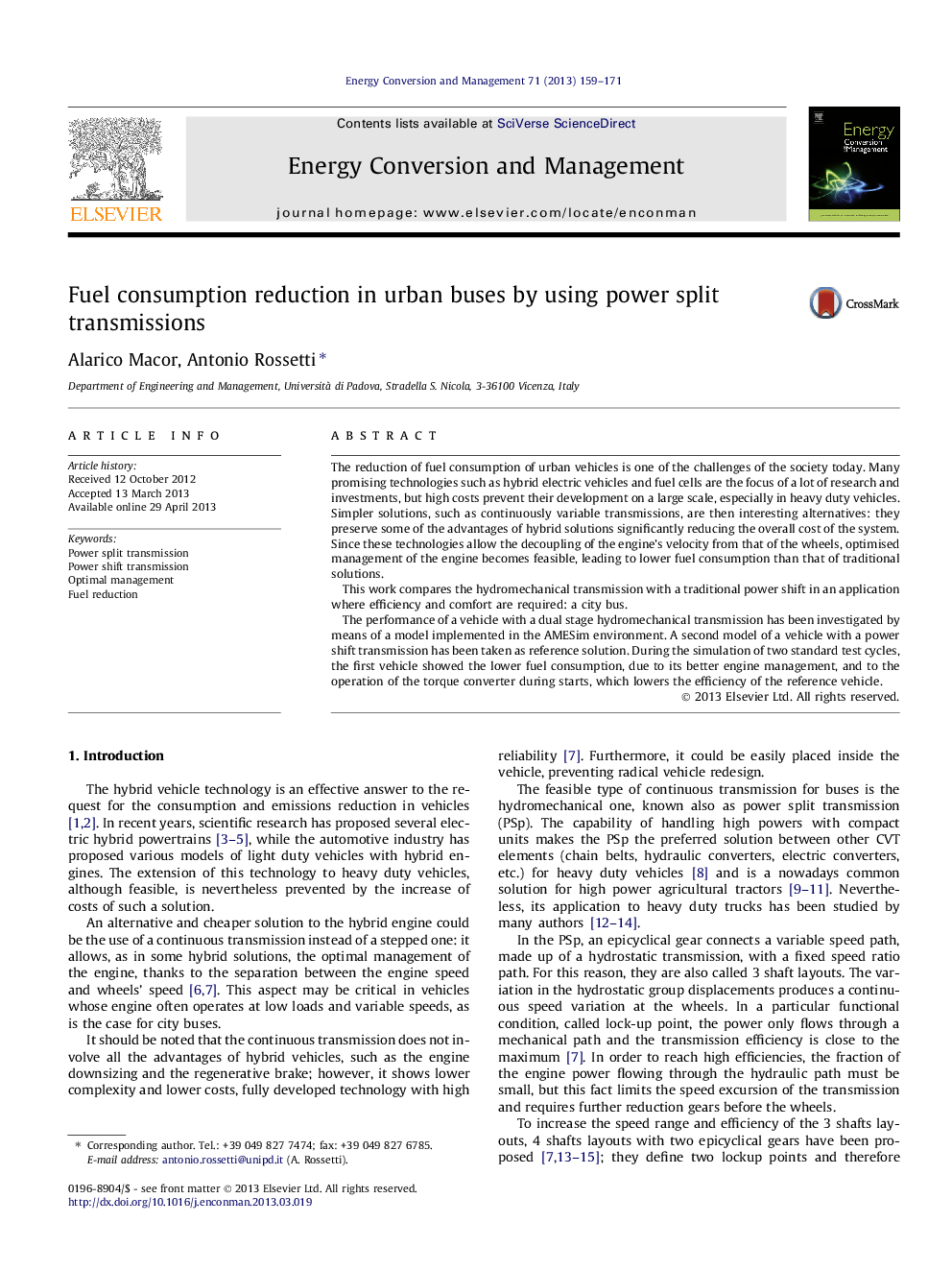| Article ID | Journal | Published Year | Pages | File Type |
|---|---|---|---|---|
| 772159 | Energy Conversion and Management | 2013 | 13 Pages |
•Fuel consumption is highly influenced by transmission layout and control.•Continuous Variable Transmission allows control of the working point of the engine.•Hydromechanical CVT was numerically tested and compared with usual mechanical solutions.•CVT solution proved to reduce fuel consumption, improving the I.C.E. mean efficiency.•Results obtained from standard emission test cycles: New York and Manhattan Buses.
The reduction of fuel consumption of urban vehicles is one of the challenges of the society today. Many promising technologies such as hybrid electric vehicles and fuel cells are the focus of a lot of research and investments, but high costs prevent their development on a large scale, especially in heavy duty vehicles. Simpler solutions, such as continuously variable transmissions, are then interesting alternatives: they preserve some of the advantages of hybrid solutions significantly reducing the overall cost of the system. Since these technologies allow the decoupling of the engine’s velocity from that of the wheels, optimised management of the engine becomes feasible, leading to lower fuel consumption than that of traditional solutions.This work compares the hydromechanical transmission with a traditional power shift in an application where efficiency and comfort are required: a city bus.The performance of a vehicle with a dual stage hydromechanical transmission has been investigated by means of a model implemented in the AMESim environment. A second model of a vehicle with a power shift transmission has been taken as reference solution. During the simulation of two standard test cycles, the first vehicle showed the lower fuel consumption, due to its better engine management, and to the operation of the torque converter during starts, which lowers the efficiency of the reference vehicle.
